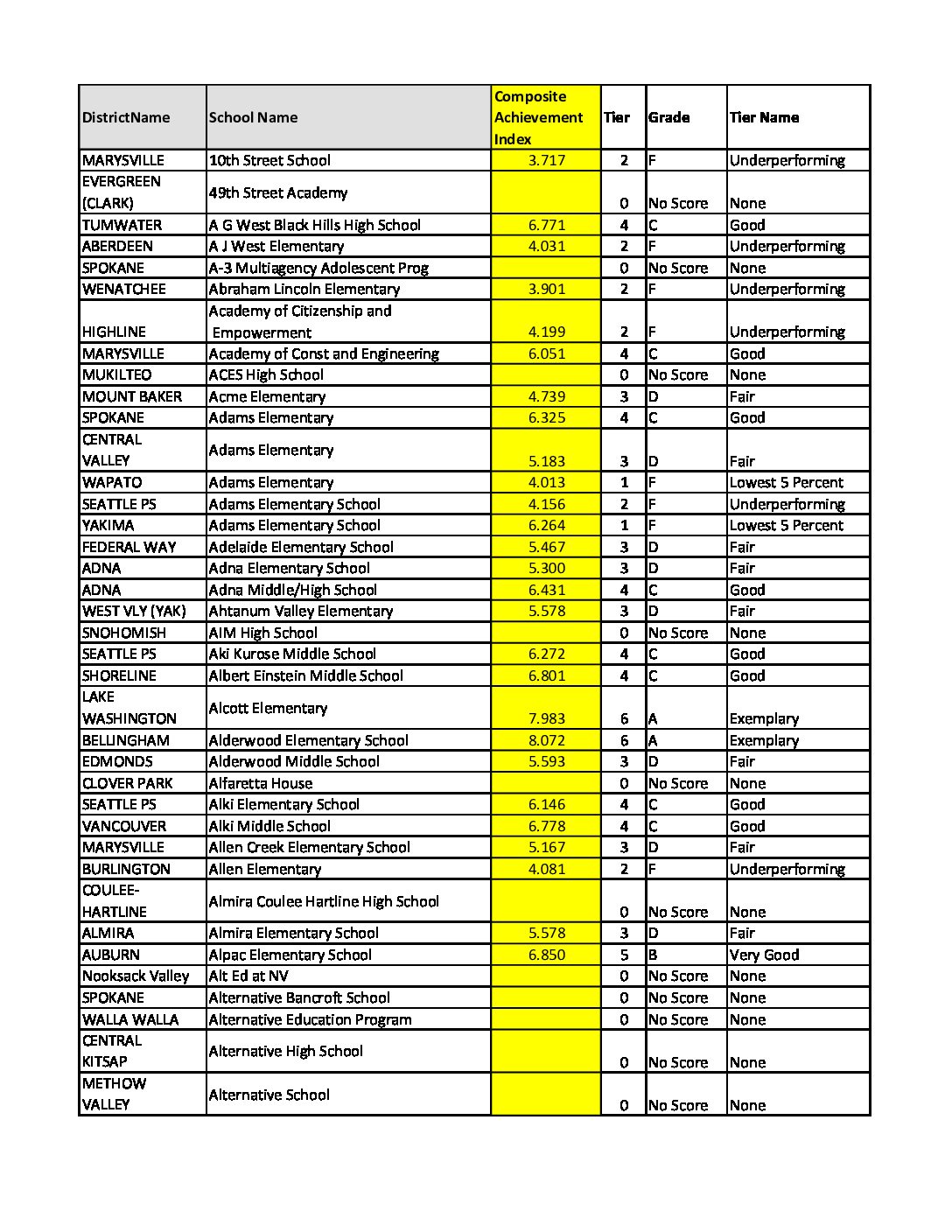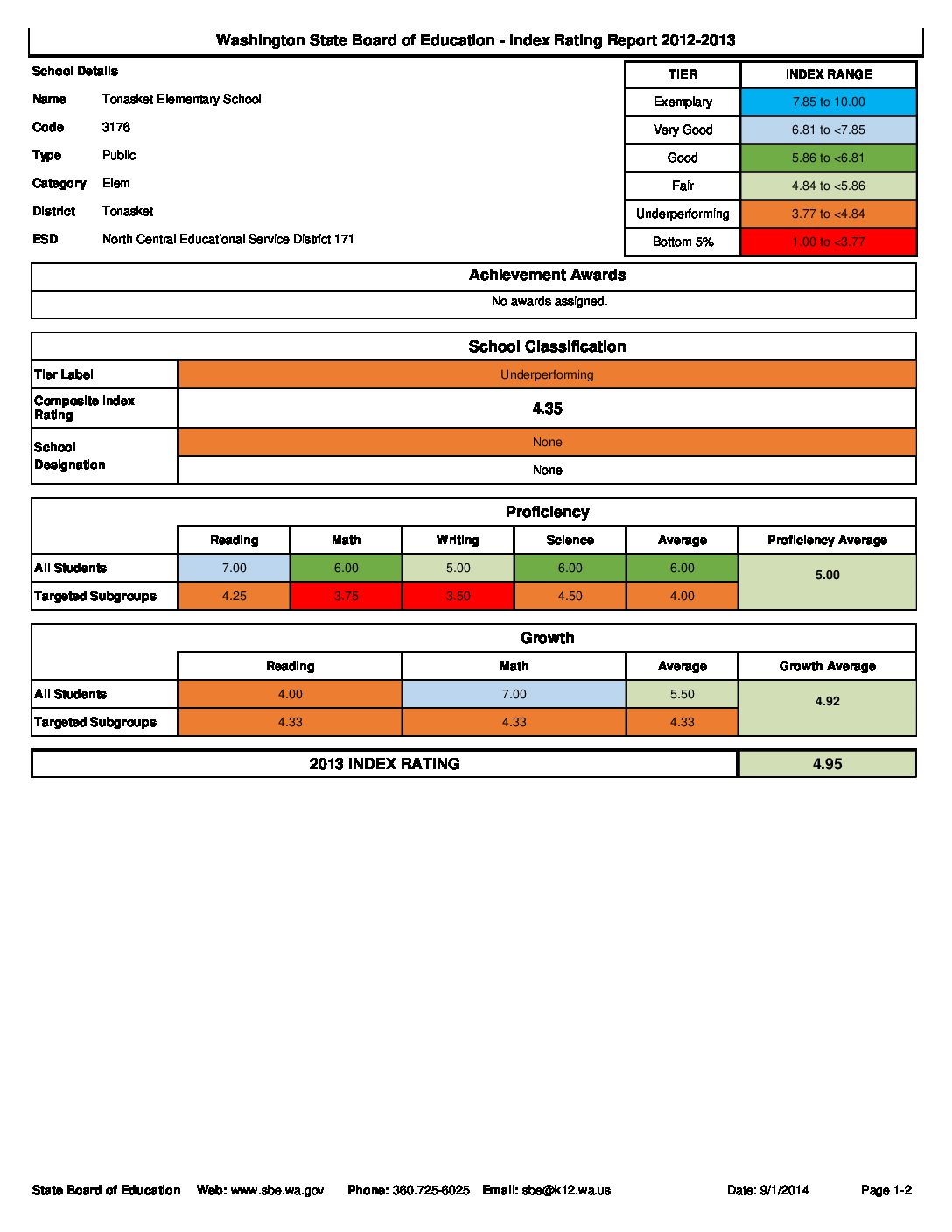Tonasket High School science teacher Shawn Rader explained to the district’s school board last March why he has been working on a concept called Standards Based Grading for some time.
The grading system is something that is part of the Teacher/Principal Evaluation Project that school districts implementing, but it’s been a passion of his for some time.
“It came to me after a talk with (an exchange student from Brazil),” he said at the time. “In AP biology we started talking about grade point averages. When I asked him what he had, he said they didn’t have that in Brazil. I thought that was interesting … how do you measure what you’ve done?
“He said, you have a checklist. Once you’ve mastered everything on the checklist, you get to graduate. And that is what this standards-based grading is all about. I can look at a student’s GPA and it tells me nothing about what that student knows.”
It’s interesting that as schools and teachers are moving away from the archaic “A, B, C” grading system, that others are trying to influence voters by using those same designations.
One of those pushing for those kinds of grades is Gov. Jay Inslee. Interestingly, the Washington Policy Center, which bills itself as an “independent, non-partisan think tank” but tends to lean to the right with its policy recommendations, embraced the Democrat governor’s recommendations and for the past several years has been issuing letter grades based on the State Board of Education’s Achievement Index.
We had a reader bring these “grades” into our office, which included Tonasket Middle and High Schools each rating a C and Tonasket Elementary getting an F based on their 2012-13 score. Similarly, Oroville Middle-High School received a D, while Oroville Elementary also rated an F.
Sure, a letter grade is an iconic, familiar way to quickly judge all things academic. But what does it really tell you? Since my wife is a Tonasket teacher, of course this is something that interests me (and if you question my objectivity, go ahead and stop reading. At the same time, that’s why this is a column. This isn’t about defending anyone’s performance, and I won’t do that here, but determining what readily available information actually reveals.)
Digging deeper
The Washington Public Policy Center makes its grade allocation based upon the state board’s tier assigned to each school. It also posts each school’s “Composite Achievement Index.” It looks like this:
LINK – 2013 Achievement Index by School Final
That still doesn’t tell us much. What I’d rather see are the actual Washington State Board of Education Achievement Index scores (available on the OSPI website at eds.ospi.k12.wa.us). The policy center does include that index (which is a composite of about 35 categories), but there is far more information there than that single number.
In fact, there is a chart on the OSPI site that looks much like the description of Rader’s grading system.
So, since both Tonasket and Oroville Elementaries are considered “Failing,” let’s see what lies beneath that composite average.
The two basic categories are Proficiency (meeting state-mandated standars) and Growth (difference between where students are at the end of the year relative to the beginning).
Each of those scores is broken down into subgroups – Non-targeted subgroups (White and Asian students) and Targeted Subgroups (the primary ones being pertinent to our local districts being Hispanic students, English Language Learners (ELL), Students with Disabilities, and Free/Reduced Price Lunch (students considered to be living in poverty).
Each school has its strengths and weaknesses. Each is strong in some areas and in need of a lot of work in others. Not only that, but this is a one year snapshot. The website includes that last several years of data, so trends can be analyzed. Also, one thing the state does not take into account in its scoring is school size. This is key because when dealing with averages, one student’s score carries a lot larger weight relative to the total at a smaller school than a larger. So a school like Oroville will likely see its scores fluctuate up and down more from year to year than a school such as Tonasket (which in turn will show more fluctuation than a Seattle or Spokane large school).
One other caveat to a school’s overall designation – the one that the Washington Policy Center referenced, and that even the state places front and center on its website, does not relate precisely to a school’s average of these scores.
You have to read the website’s FAQ to pick this up, but getting “dinged” in one or two categories can drag down a school’s overall designation. As can having issues over a three-year period.
To quote:
Schools placed in the Priority Tier can be designated as one of the lowest performing schools for any of several reasons.
a. Three-year average proficiency rate (combined reading and math for all students) is less than 40 percent. A school’s current proficiency rate might be over 40 percent (producing green cells) but the three-year average is still below 40 percent meaning that the school is placed into the Lowest 5% tier regardless of other performance.
b. Three-year average graduation rate (for all students) is less than 60 percent. A school’s current graduation rate might be above 60 percent (producing green cells) but the three-year average is still below 60 percent, so the school is placed into the Lowest 5% tier regardless of other performance.
c. A Continuing Priority school is placed into the Lowest 5% tier until a Turnaround Plan has been implemented for three years and the school meets the predetermined exit criteria. These Priority Schools could be showing blue and green cells for the current year and have a good index rating but are placed into the Lowest 5% tier regardless of other performance because the school did not meet exit criteria.
There’s no such thing as a perfect school. Or perfect evaluation system. Regardless, boiling three dozen tiers of information down to one letter grade may tell you something. But what it tells you may not be an accurate reflection of anything but what fits into someone else’s neatly packaged agenda.




